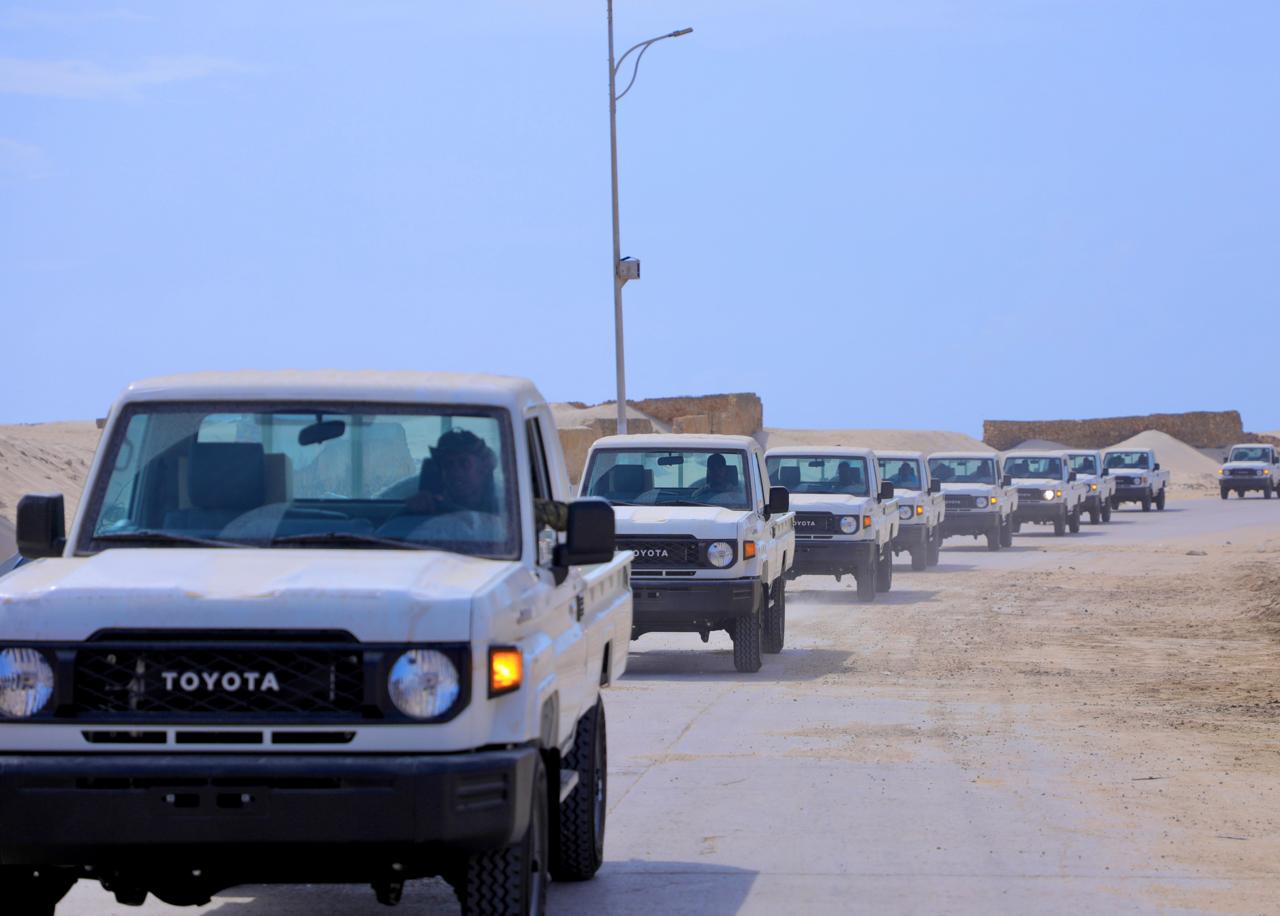Tsegaye Tegenu, PhD
2024-11-23
Since the early 1970s, Ethiopia’s population has tripled, growing within a subsistence economy and fragile institutions. Today, it stands as the second most populous country in Africa, with over 110 million people. Projections indicate it will reach 130 million by 2032.
Large populations mean greater overall demand for essential resources like food, water, and energy, even if the growth rate slows. This is particularly problematic for countries that already face resource shortages. A country with a population of 200 million will need far more food, water, and healthcare than one with 20 million, even if both are growing at the same rate.
One cannot ignore the demands and basic needs of a population of 110 million people. The scale and magnitude of the needs and demands of the population can be calculated. Focusing only on fundamental needs (food and nutrition, clean water, shelter, clothing and healthcare), for a population of 110 million, there would be a total of 550 million basic needs that need to be met. If the average household size is five, there would be a total of 110 million basic needs to be met across all households.
The sheer scale of these needs amplifies the complexity and the urgency with which they must be addressed. Addressing 110 million basic needs requires immense quantities of these resources, necessitating efficient production, distribution, functional logistics system and management systems.
Huge Demand for Resource
The demand for resources in a population of 110 million people is immense. A large-scale supply of essential resources—such as food, water, energy, healthcare, and housing—are needed to meet the needs of a growing population. These resources must span multiple sectors, including agriculture, energy, infrastructure, healthcare, education, and employment.
Large-scale, sustainable, and efficient production systems must be in place to ensure that resources are generated at the required scale. Resources need to be distributed fairly, ensuring all populations, including underserved and vulnerable communities, have access to basic needs. Effective transportation, storage, and distribution networks are critical for timely and cost-effective delivery. Advanced technologies are necessary to optimize resource allocation and manage large-scale logistics.
Effective Resource Delivery System
The demand for resources in a population of 110 million people requires not only Comprehensive resource creation framework but also effective resource delivery system. The system must handle vast quantities of resources across multiple sectors (food, water, healthcare, energy, etc.) and scale with growing demand. Resources need to be delivered quickly and efficiently, ensuring minimal delays and waste, particularly in areas facing fluctuating needs or emergencies. It must ensure fair distribution, reaching underserved regions and marginalized groups, so no one is left behind.
The system must adjust to shifting population dynamics, changing demands, and unexpected challenges (e.g., disasters, economic shifts). The system must be resource-efficient, minimize waste, and reduce environmental impact while ensuring long-term sustainability. Multiple sectors and stakeholders (government, private sector, local communities, etc.) need to work together seamlessly to avoid inefficiencies and ensure smooth operations.
Contexts for Integration and Coordination of Delivery System
A well-orchestrated system means seamless cooperation between various sectors—health, education, food security, infrastructure—ensuring that resources flow smoothly and effectively. Coordination among local governments, national authorities, and the private sector is crucial to avoid duplication, bottlenecks, or inefficiencies.
The logistics of delivering services and resources to 110 million people is an immense challenge, especially when it is shaped by the responses of key actors. Actors at different levels—households, communities, private sector, civil society, and governments—play a pivotal role in shaping how services and resources are distributed. Their responses determine the efficiency, equity, and sustainability of delivery mechanisms.
Economic, social, institutional and governance contexts significantly influences how logistics for resource delivery is planned and executed. It determines the capacity of actors and the systemic challenges they face. Countries with strong economies can allocate more resources for service delivery, while fragile economies face limitations. Economic systems with robust infrastructure (roads, transport networks, energy grids) enable smoother logistics. Well-functioning education and healthcare systems can manage large-scale demands better. Strong institutions can plan and coordinate large-scale logistics effectively. Stable governance enables long-term planning and efficient resource allocation.
Fragile Context
The interaction between actors’ responses and contexts determines whether resources and services are available, accessible and sustainable. When the logistics of delivering resources and services to a massive population like 110 million occurs under a fragile context, numerous challenges emerge that can undermine both the efficiency and equity of distribution. Fragile contexts, characterized by weak institutions, poor infrastructure, and social or political instability, exacerbate the inherent complexities of large-scale logistics.
In fragile contexts, the combination of weak governance, economic instability, limited public services, and social inequality creates a highly vulnerable environment that complicates efforts to address population growth challenges and sustain long-term development. In fragile contexts, the logistics of delivering resources and services to a massive population like 110 million faces significant obstacles, including inefficiency, inequity, and vulnerability to shocks. These challenges exacerbate poverty, inequality, and instability, creating a vicious cycle of fragility. Effective logistics solutions require coordinated, inclusive, and long-term approaches that address the underlying weaknesses of fragile systems while ensuring equitable and sustainable service delivery.
Added to these challenges you have ethnic politics
Adding ethnic politics to the challenges of delivering resources and services in fragile contexts with rapid population growth amplifies the complexity and severity of the issues. Ethnic politics—where political decisions and resource allocations are influenced by ethnic identity—creates additional layers of tension and inequality, significantly affecting logistics systems.
Governments or local authorities can prioritize resources and services for ethnic groups aligned with those in power while neglecting others. This creates disparities in access to basic services like healthcare, education, and infrastructure. Ethnic politics often leads to deep societal divisions, where groups compete for resources rather than collaborating for shared development. This can fracture logistics systems as ethnic considerations take precedence over national priorities.
Logistics and service delivery systems are staffed or managed based on ethnic affiliations rather than merit, reducing efficiency and professionalism. Politicians use the delivery of resources and services as a tool to gain or maintain support from their ethnic groups, rather than addressing the most urgent needs of the country. Ethnic favoritism erodes the professionalism and legitimacy of public institutions, making them less capable of managing logistics and service delivery for a large population. Ethnic politics often prioritizes immediate political gains over long-term development plans. This focus undermines systemic and strategic approaches to logistics.
Conclusion
The combination of ethnic politics, fragile contexts, and rapid population growth creates a highly volatile situation for logistics and service delivery system in the country. Ethnic politics exacerbates inequities, inefficiencies, and conflicts, making it difficult to meet the needs of a large and growing population. Addressing these challenges requires promoting inclusivity, strengthening institutions, and adopting systemic, equitable approaches to logistics and governance. Without such efforts, the cycle of fragility and division will continue to undermine development.
Ignoring the combination of ethnic politics, fragile contexts, and rapid population growth is not just short-sighted—it is dangerous. Raising awareness, fostering systemic thinking, and promoting collaborative, inclusive strategies are critical to mitigating risks and unlocking the potential for growth, equity, and stability. Encourage people to see this intersection as an urgent priority that requires attention and action.










